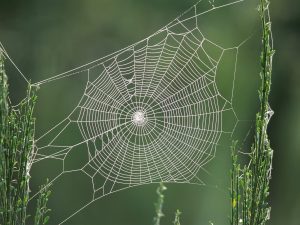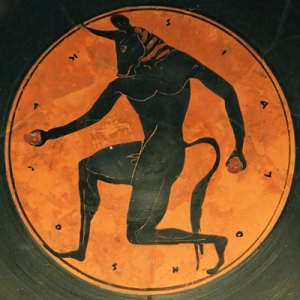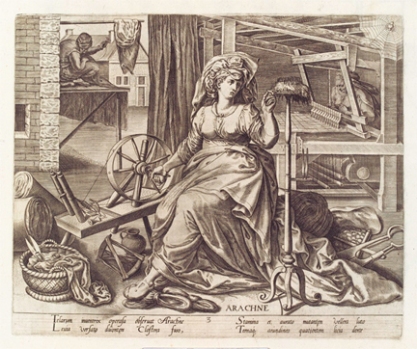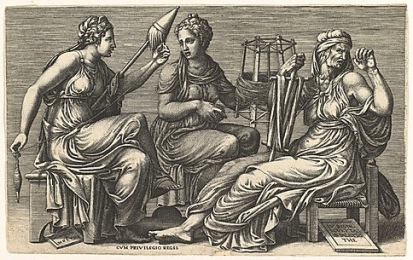The following is taken from pages 160-162 of ‘The Secret Life of Humans’
What James Vogh seems to have missed in his otherwise excellent investigation [The Thirteenth Zodiac] is the overwhelming psychological significance of the spider’s web itself. It is a key that unlocks many further mysteries. The real spider makes its web by first establishing the straight lines radiating from a central point. Then from that central point it moves in a spiral towards the outer edge, laying down a widely-spaced cross-thread as it goes. But when it reaches the outer edge it turns, and now spirals inwards laying the narrow-spaced cross-thread of the finished web. As it goes it gathers up the original outward moving spiral cord, which was only a kind of structural sketch or guide.
Surely in these two acts of the spider we have the explanation of the ancient inward and outward spiral dance of the maze and labyrinth? Sometimes the ancient dancers laid out and gathered up a thread – but there is a mass of confirmatory testimony in legend also. So when Theseus was condemned by King Minos to be shut in the labyrinth with the dreaded Minotaur, he was secretly given a ball of thread by Ariadne (the daughter of MInos, who had fallen in love with Theseus) so that he could find his way out again.
This ruse of the ball of thread had been suggested to Ariadne by Daedalus. Minos now wished to kill Daedalus, who fled. Minos beleived that Daedalus was in hiding at the court of King Cocalus, so he went to Cocalus with a puzzle. Here is a snail shell and a thread, he said to Cocalus. How can the shell be threaded without breaking it? Minos knew that Cocalus would take the riddle to Daedalus, which he then did. Daedalus’ solution was to tie the thread to an ant, which then followed the path of the spiral shell to the end and back again.
It was Daedalus also who procured the bull which made love to Pasiphae, the wife of Minos, a union which produced the bull-headed monster the Minotaur. Pasiphae is the Moon Goddess – and she is also the mother of Ariadne. Ariadne therefore also represents the Moon. In turn, some scholars consider that Ariadne and Arachne are one and the same. But that both of them are much involved with threads and labyrinths and weaving is in any case not in doubt.
What we have taken the briefest of looks at here is a mass of evidence which points again and again to conclusive but secret links between labyrinths, mazes, spirals, threads, spiders and moons.
But there is much more in these secrets than traditional scholars have realised. James Vogh has made the following interesting suggestion. The rightful place of Arachne, the Spider Goddess and the missing thirteenth sign of the zodiac, is between Taurus the Bull and Gemini the Twins on the conventional twelve-sign zodiac. (On Vogh’s revised zodiac Arachne’s house extends from 16 May to 13 June.) Vogh proposes that the word ‘Minotaur’ is a form of an anagram between ‘geMINi’ and ‘TAURus’. The fact that the order o fthe two houses on the zodiac are reversed in the anagram is no problem. Such reversals, plays on words, use of initial letters only of words in sentences to spell out meanings, and so on and so on, are absolute commonplaces in the writings and sayings of kabbalists, mystics and adepts down the ages. They were always trying to preserve and communicate the ancient truths for those who had eyes to see, while hiding them from the gaze of the stupid or uninitiated.
The central picture of the synagogue mosaic at Beth Alpha is an excellent pictorial example of such a message with hidden meaning. She has the crescent moon at her left side (and the crescent moon is the most powerful moon of all – see Guardians of the Ancient Wisdom). Her head-dress contains thirteen items. She rules the four seasons (or the four elements perhaps – earth, air, fire and water) and the eight planets (?) with reins or threads – and we have yet to consider the full implications of the thread. This is, in fact, Arachne the Spider Goddess, the ancient, true ruler of the universe.
As for the Minotaur, living at the centre of the labyrinth he therefore symbolises the central mystery, and as the son of the Moon is also a disguised reference to her. I myself also think the Minotaur is a disguised reference to the cerebellum (the heavily folded and creased cerebellum is more of a labyrinth even than a walnut). So the Minotaur is the ‘cerebellum-headed’ human being. And since a birth in Arachne is par excellence the sign of the psychic individual (see below), the various interconnections are perfect.
But let us come back for the moment to the spider web itself, the most important symbol of all. I hope we have made it amply clear that all labyrinths and mazes are symbolic webs. The straight, radial lines of the spider’s web are the same straight lines of logical rational thought: and also at the same time the rays of the sun, the symbol of waking consciousness. The spiral line of the web is the symbol of intuitive, unconscious thought, the sideways oblique approach of the mystical mind – ‘knight’s move’ thinking, as it has been called, in an image taken from chess. Such oblique, non-linear thought operates above all at night in dreams, and the Moon herself is likewise a symbol of unconscious thought. Scientific evidence is accumulating, by the way, that the phases of the Moon directly relate to amount and vividness of dreaming, an ancient belief in any case.
But matters do not end even here. When the spider is making its second and final spiral, it makes the thread sticky. But it would now itself stick to its own web. So the spider plucks its web, and the sticky substance arranges itself into droplets at the intervals dictated by the laws of harmonic vibration. Now the spider can run over the web, touching only the non-sticky parts.
Spiders communicate in a complex way with their mates and their young by twanging different harmonics on the web. The mother talks to her children in this way: ‘stay in the nest, come and eat, remain motionless where you are on the web – there is danger’ and so on. We need not seriously doubt that the ancient meditators observed and understood all this.
In ancient Greece there was the belief that the planets were arranged in distance from the sun according to the laws of harmonics – and this is very nearly, if not quite true. The harmonies of the musical scale and the relative positions of the planets were thought to be expressions of the same basic laws of vibration in the universe – hence the phrase ‘the music of the spheres’. These ideas are no doubt far older than the Greeks.
Now we can see how the ancients pieced everything together in their vision of the universe. (Let us not overlook here that the central motto was ‘as above, so below’. What goes on in the heavens is the same as goes on below.)
The Sun is the centre of the web and his straight rays hold the planets in position. But the Moon, with her erratic path, is the spider, whom the web serves. And we, mankind, are the children of the spider – hence the umbilical cord of the new born baby. This is, again, the spider thread which connects the baby to the centre of the labyrinthine womb. (And trees were said to be the umbilical cord which joined the Earth to the sky.)
But many of the Moon’s threads are invisible. The thread which draws up the tides is invisible – it is magnetism. The thread which draws the floating lodestone to the north is invisible – it is magnetism.
From here it is but one more short step to the ‘web of fate’ and the ‘thread of life’ which the Fates (or the Spinners as they are also called) cut when we die.




